Posts Tagged ‘ozone’
It’s a Texas vs EPA Cage Match. Winner Takes All …The Air You Breathe
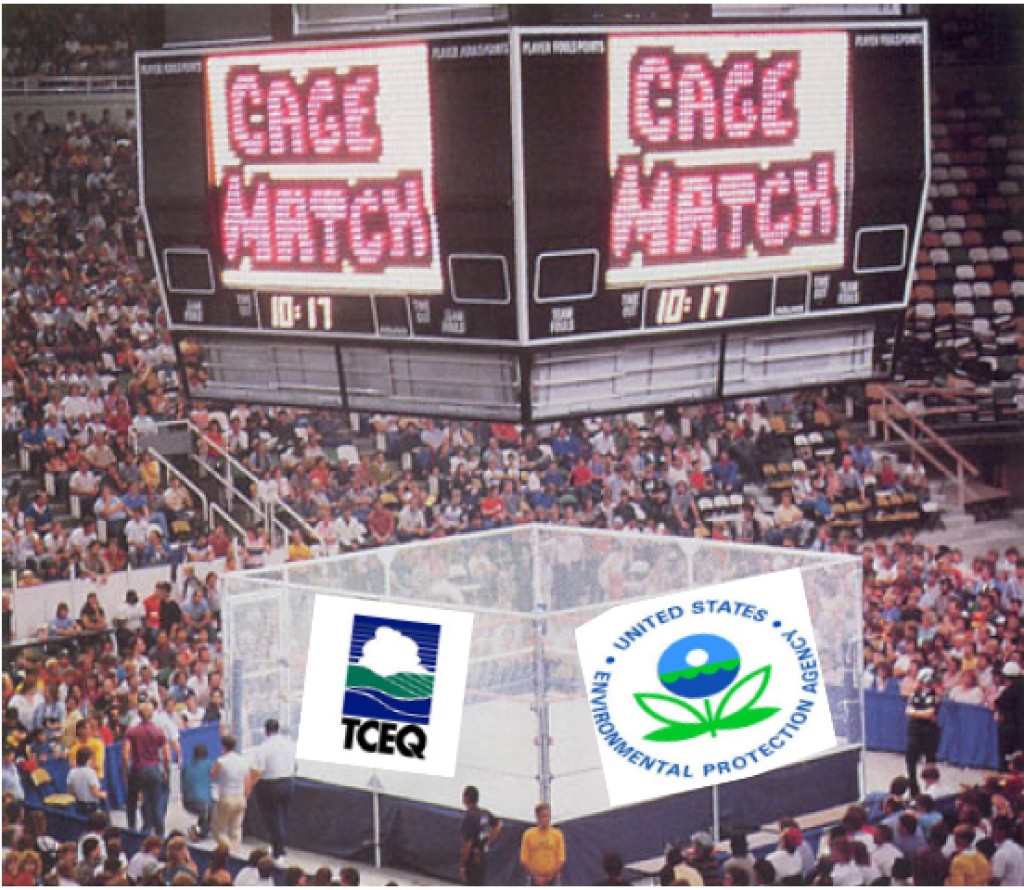 JOIN OUR TAG TEAM EFFORT TO TAKE DOWN THE STATE OF TEXAS
JOIN OUR TAG TEAM EFFORT TO TAKE DOWN THE STATE OF TEXAS
BUT WATCH OUT – THEY PLAY DIRTY
NEXT THURSDAY EVENING
JANUARY 21st
6:30 PM
616 Six Flags Road
First Floor HQ of the
North Central Texas Council of Governments
There's an important bureaucratic cage match between EPA and the State over how clean your air should be.
The state says just by hitching a ride on already-in-progress federal gasoline mix for cars and trucks, DFW ozone, or smog, will drop to levels "close enough" to the current federal smog standard of 75 parts per billion (approximately 78 ppb) . No new cuts in pollution required.
The EPA says not so fast – "close enough" may not be good enough this time around and you're not following the Clean Air Act in laying back and requiring no new cuts in pollution.
EPA has told Austin a failure to follow Clean Air Act rules will force it to take responsibility for the plan away from the State.
Is this something you want? If so, you should show up and next Thursday evening to give the EPA the political support it needs to pull the rug out from under the State.
WHAT HAS THE EPA ALREADY SAID ABOUT THE STATE'S PLAN?
Along with comments from DFW residents, environmental groups, doctors, industry and elected officials, EPA itself will weigh-in with written comments on the TCEQ plan by the deadline of January 29th.
But we don't have to wait that long to find out what EPA really thinks about what the State is proposing. Last year, EPA provided 11 pages of comments on exactly the same plan.
1) This plan won't work without more cuts in pollution
What EPA Said:
"Based on the monitoring data and lack of additional large reductions in NOx within areas of Texas that impact DFW, it is difficult to see how the area would reach attainment in 2018 based solely on federal measures reductions from mobile and non-road….The recent court decision that indicates the attainment year will likely be 2017 for moderate classification areas such as DFW, makes it less clear that the area will attain the standard by 2017 without additional reductions."
What EPA Meant:
It wasn't looking good when the deadline for reaching the 75 ppb standard was 2018 and the State didn't require any new cuts in air pollution, but now that the deadline is 2017, your do-nothing "close enough" plan is even less likely to work.
2) Your case for doing nothing isn't very good
What EPA Said:
"While the State has provided a large chapter on Weight of Evidence, the principal evidence is the recent monitor data. The monitor data does not show the large drops in local ozone levels and therefore raises a fundamental question whether the photochemical modeling is working as an accurate tool for assessing attainment in 2018 for DFW."
What EPA Meant:
Actual measurements of smog in DFW seem to undercut your claim that the air is getting cleaner faster. Maybe your computer model that's driving the entire plan isn't all that great. (And this was before smog levels went UP after the summer of 2015 – something not predicted by the State's model….)
3) Review pollution limits for the Midlothian cement kilns, or we'll reject your plan
What EPA Said:
"Because of significant changes in the type and number of cement kilns in Ellis County,…TCEQ's rules need to be reevaluated to insure these reductions are maintained, and the emission limits reflect a Reasonably Available Control Technology (RACT) level of control as required by the Clean Air Act…Failure to conduct a thorough RACT analysis for cement kilns which would include appropriate emission limits would prevent us from approving the RACT portion of the attainment plan submittal."
What EPA Meant:
Update your kiln pollution limits, or this part of the plan is toast. (Texas chose not to perform this update, in essence, giving EPA the bureaucratic finger.)
4) Oil and Gas pollution seems to be keeping the region's smog levels higher than they should be
What EPA Said:
"Recent NOx trends (Figure 5-10 in TCEQ's Proposal) indicate a fairly flat NOx trend for several NO monitors in the western area of the DFW area (Eagle Mtn. Lake, Denton, and Parker County monitors). These monitors are in areas more impacted by the growth in NOx sources for Oil and Gas Development that seem to be countering the normal reduction in NOx levels seen at other monitors due to fleet turnover reductions (on-road and Nonroad). These higher NOx levels in the modeling domain that seem to be fairly flat with no change since 2009
raise concern that the area is not seeing the NOx reductions needed to bring the ozone levels down at these monitors."
What EPA Meant:
Since the historically worst-performing air pollution monitors in DFW are located in exactly the same area as a lot of gas and oil activity, and these monitors haven't been seeing the expected decrease in smog you predict, maybe you ought to think about cutting pollution from those oil and gas sources. Like we said, this plan needs more cuts in pollution.
5) Your own evidence supports cuts in pollution from the East Texas Coal Plants
What EPA Said:
"The TCEQ provided an evaluation of emissions from all of the utility electric generators in east and central Texas. However, the discussion in Appendix D on the formation, background levels, and transport of ozone strongly supports the implementation of controls on NOx sources located to the east and southeast of the DFW nonattainment area. How would a reduction in NOx emissions from utility electric generators in just the counties closest to the eastern and southern boundaries of the DFW area impact the DFW area?"
What EPA Meant:
Despite your protests, the State's own analysis shows cuts in pollution from the East Texas Coal Plants have a big impact on DFW smog levels and supports the argument for putting new controls on them. Did you actually run your fancy-dancy computer model to see what would happen if you did that? (No, the State did not. But UNT and Downwinders did.)
WHY WOULD AN EPA PLAN FOR DFW AIR MAKE ANY DIFFERENCE?

If the EPA rejects the State's plan, the clock begins ticking: the State is warned it has to write a new plan and, meanwhile, EPA begins to write its own. If the State doesn't turn in a plan the EPA finds acceptable in 24 months, the EPA plan is implemented instead.
The State has no interest in any new cuts of pollution from any sources. It thinks it's plan is already "close enough."
If the EPA is writing the plan, citizens can use the new UNT study to show the Agency which cuts get the largest drops in smog – using the State's own air model.
We can use Dr.Haley's study to show the approximate economic and public health benefits of those cuts.
More change happens if EPA is writing the plan.Enough to finally get DFW safe and legal air? We don't know until we try. The alternative is doing nothing.
US Cement Plant Using SCR Pollution Control Device Achieves 80% Reduction. Texas Says It’s Still Not Feasible.
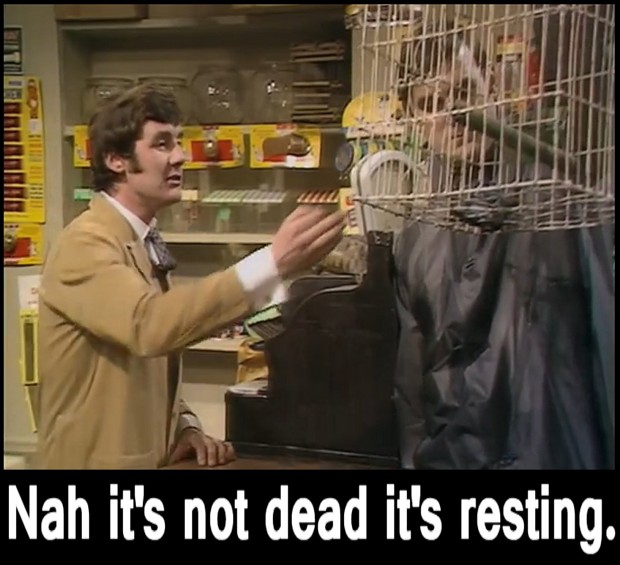 EPA has released the results of the first test of a full-scale Selective Catalytic Reduction (SCR) unit on a US cement plant and the numbers look good.
EPA has released the results of the first test of a full-scale Selective Catalytic Reduction (SCR) unit on a US cement plant and the numbers look good.
As many of you know, SCR is just an industrial-sized version of the catalytic converter in your car. It can capture up to 90% or more of the smog-forming pollution from a cement plant. In use on cement kilns since 2001, there are at least a half a dozen cement plants in Europe that use SCR successfully, but the technology has been slow to arrive in the US because of regulatory laziness and industry resistance.
But after 15 years, that's finally changing.
in 2013, LaFarge Cement entered into a consent decree with the EPA and the US Justice Department as part of a settlement over a string of environmental violations, including excessive smog-forming Nitrogen Oxide (NOX) emissions. As part of that settlement, Lafarge was to retrofit its Joppa, Illinois "dry process" cement kiln with an SCR unit, record its effectiveness during stack testing, and report on the results of those tests by 2015.
This last week, those results were finally made available by EPA and they show SCR was able to reduce NOx by 80%.
That's approximately twice as effective as SNCR technology, (Selective NON-Catalytic Reduction), the current pollution control device for NOx most often used in U.S. cement plants.
Moreover, according to LaFarge, "the SCR control technology performed well and no operational problem was encountered."
In fact, the control technology worked so well, LaFarge is now getting a permit from the Illinois state environmental agency to operate SCR past the EPA-mandated settlement period.
But while LaFarge is getting its SCR permit, Holcim's Midlothian cement plant has already applied and been granted one by the Texas Commission on Environmental Quality for construction and operation of its own SCR unit. It should be up and running by this time next year.
So that makes two U.S. cement plants with permits to run full-scale SCR units. One that was forced into the choice by EPA and now wants to keep using it, and another voluntarily adding it.
But according to the TCEQ, even though it gave a permit to Holcim to install SCR, and even though Holcim's SCR unit will be operational in a year, and even though the LaFarge test was a success, and even though SCR has been used for 15 years by European cement companies – SCR is "not economically or technically feasible." That's exactly what the Commission said in response to comments from both citizens and the EPA in its new clean air plan for DFW a couple of months ago.
That's right. One the one hand the Commission has granted a permit to Holcim to build an SCR unit in its own backyard, and on the other it's still calling the technology infeasible. It's the stuff of Monty Python sketches.
And that's not all. There is no mention of the Holcim Cement SCR permit in the TCEQ's own official arguments against SCR in its DFW clean air plan. Not one. Since Holcim's building of an SCR unit would tend to empirically disprove TCEQ's contention that the technology wasn't practical, the state just pretends it's not happening. As with climate change and smog, any facts that conflict with the pre-determined ideologically-correct premise must be ignored.
Presumably, Holcim is building the SCR unit because it's made the business judgment that the technology is not only both economically and technologically feasible, but beneficial to the company's bottom line. Presumably LaFarge is pursuing a permit for its SCR unit because it has made the same practical decision. Yet, in a strange role reversal, a Texas state government agency is now telling business it's making the wrong choices. It's overruling the industry's decision to reduce pollution through SCR use by saying "not so fast."
This is how bad its gotten: the Texas approach to clean air is now so backwards that the cement industry is more aggressive about reducing pollution than Austin.
So how many U.S. cement plants have to be operating with SCR before the State of Texas concludes it's a feasible technology? Two? Four? A Dozen?
Fortunately, the TCEQ isn't the last word on this. The Clean Air Act says any and all reasonably available technology must be used on major pollution sources like the Midlothian cement plants when a clean air plan is being drafted. TCEQ hasn't done that. We think they're breaking the law. There are signs that EPA thinks so as well.
EPA is ultimately in charge of enforcing the Clean Air Act, and if it doesn't do it correctly, then the courts step in.
The best hope for safe and legal air in DFW is for EPA to rigorously enforce the law. The State of Texas will not do so. If you agree then please take a minute to:
1) sign this petition to EPA
2) Send this e-mail to EPA
Thanks.
Going Backwards: DFW’s Annual Smog Average Went Up Twice in Two Days Last Week
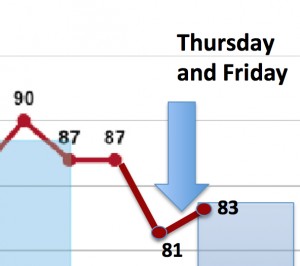 State officials and industry PR types thought they'd caught a break last summer when two things produced a much lower annual smog average, called a "Design Value."
State officials and industry PR types thought they'd caught a break last summer when two things produced a much lower annual smog average, called a "Design Value."
Since it's a three-year rolling average of smog numbers, past years roll off as new ones come on. Smog numbers from 2011 that had been so high they'd sent the average soaring, were finally rolling off and wouldn't be included in the average.
Second, unusually cooler temperatures and rain kept a new round of numbers lower. Combined, these factors resulted in a significant decrease in the smog average for 2014.
But in 2015, a more typical summer, or at least August, is bringing the average back up (Over 60% of the 100 highest recorded levels of smog this summer occurred in the last 30 days). Smog levels are higher across the board this year than last. There are more monitors recording more "exceedences" of the national smog standard. Leading them all is the Denton monitor, which saw ozone levels rise on Thursday and then skyrocket on Friday. The numbers were so high on both days they moved the needle of the annual smog average, the DFW Design Value, up from 81 to 82 parts per billion (ppb) on Thursday and up to 83 ppb on Friday. The standard is 75 ppb.
Even though Houston has recorded higher smog numbers than DFW this year, 2014's lower smog numbers was even more anomalous for that city than for North Texas. Last year's much lower numbers in the Bayou City are canceling out this year's much higher numbers. So that in 2015, DFW's Denton monitor's annual average of 83 ppb is the highest in the State of Texas.
And that means that according to the official accounting of the Clean Air Act, DFW has dirtier air than Houston. And not for the first time.
It also means we're rolling backwards in terms of air quality progress. With at least a whole month of "ozone season" to go, DFW's smog average is now only a little lower than it was in 2009. It would only take one or two more bad days to raise the average again.
This is the second time in four years that DFW's smog average has increased during the implementation of a state clean air plan for the area. Neither plan required new controls on large industrial polluters significantly contributing to the problem, like the gas industry, East Texas coal plants, and Midlothian cement kilns. There may be some connection there.
Given the state's stellar two decade-old track record of never meeting a clean air plan deadline, its latest plan was always likely to fail. But a federal court roll back of the deadline to get to the 75 ppb standard at all DFW monitors, from 2018 to 2017, plus these new 2015 smog numbers, make it DOA in the real world.
However, in the regulatory world governing these things officially, the plan is still being reviewed by the EPA and, believe it or not, could get approved if citizens don't make a big stink.
That's why you need to sign our Change.org petition to EPA to reject the state's plan and send an email to EPA officials requesting they write a new clean air plan instead of the state of Texas.
Many clean air advocates cautioned that 2014 should be seen as a outlier, and this summer is justifying that caution. If the experts are right, climate change will mean future summers will be more like 2011 than 2014. We've got to have a more realistic approach to the goal of safe and legal air. The State of Texas will not provide that. EPA can.
Both Gas Industry Spinmeister and Mansfield Compressor Spew During Thursday’s EPA Hearing
 There was at least one truth uttered by Steve Everley, the professional PR spokesperson for Energy in Depth, itself the PR arm of the Gas Industry, during his testimony at last Thursday's EPA ozone standard hearing in Arlington:
There was at least one truth uttered by Steve Everley, the professional PR spokesperson for Energy in Depth, itself the PR arm of the Gas Industry, during his testimony at last Thursday's EPA ozone standard hearing in Arlington:
"…natural gas producers will be significantly impacted by EPA’s proposal to reduce the National Ambient Air Quality Standard for ozone from 75 parts per billion to between 65 and 70 ppb."
Indeed. At the rate things are going in Austin and DC, it might be the only thing to impact the industry's large emissions of pollution for many years to come. Left unsaid by Everley was why the industry would be impacted by such a lower ozone standard – because in many parts of the country now, including the DFW area, smog-forming pollution from the gas industry is contributing significantly to higher ozone levels.
Even the governmental affairs branch of the gas industry, otherwise known as the Texas Commission on Environmental Quality, admits that facilities like compressors, storage tanks, pipelines, and de-hydrators found by the thousands in the western part of the Metromess contribute more smog-forming Volatile Organic Compounds (VOCs) than all the "on-road" vehicles in North Texas combined. This is true not only at the present time, but will be true at least three years into the future, according to TCEQ's own estimates.
Gas facilities also account for the third largest source of smog-forming Nitrogen Oxide pollution in DFW, according to TCEQ numbers included in their recent air plan submitted to EPA – only a ton per day less than all "non-road" vehicles in North Texas like construction equipment, and well ahead of "point sources" like the Midlothian cement kilns and local power plants.
In all, TCEQ predicts that 35,335 tons per year of smog-forming pollution will still be coming from the region's gas industry in 2018. That's a lot. It's so much that, as the TCEQ also demonstrates with its computer modeling, even a tweak here and there in gas pollution estimates can make big differences in the levels of ozone at monitors in places like Denton and Keller and Eagle Mountain Lake – traditionally the worst-performing air quality monitors in North Texas.
And that's why a lower ozone standard is a threat to the industry. The very air quality monitors the industry affects most with its pollution are the ones driving the region's high smog levels. Lowering the ozone standard means it would have to spend money to reduce those emissions significantly. It means it would have to spend money to prevent the kind of huge "accidental" releases of smog-forming pollution released by the Mansfield compressor on Thursday even while Steve Everley was testifying to EPA.
After giving her own testimony to EPA on Thursday morning, Earthworks' Sharon Wilson and Mansfield Gas Well Awareness board member Lance Irwin headed out to the Summit Midstream Partners Compressor Station behind Mansfield's Performing Arts Center, with an infrared, or FLIR "thermal imaging" camera. Such a device is capable of recording the kinds of VOC emissions that are often smelled and inhaled by surrounding residents, but can't be seen with the naked eye.
The Summit compressor and the two nearby Eagleridge gas wells have been the scene of many different complaints from the surrounding Mansfield neighborhood – everything from airborne foam landing in backyards to oily deposits landing on car finishes. On Thursday, Wilson and Irwin were responding to a new series of complaints about awful smells. When they showed up, what the two recorded was a massive "emergency blowdown" (versus the "planned" kind). While filming the event, Wilson suffered health effects familiar to gas facility neighbors and was overwhelmed by the obvious hydrocarbon fumes. Once you see her video, you understand why:
Such a blowdown was exactly what Lance Irwin had warned the Mansfield City Council about only three days before, during comments directed at slowing down or denying the permit for a new compressor, 34 wells, 12 tanks and a assortment of other facilities at an Edge pad site near Debbie Lane in town. He pointed out that industry and government estimates about emissions never take these kind of catastrophic events into account – form a short-term toxic exposure perspective, or as it turns out, from an air quality, smog-creating perspective. And he's right.
In this regard, these kinds of accidents are no different than the infamous industrial "burps" from refineries and chemical plants along the Houston Ship Channel that lead to smog spikes downwind. There are 650 large compressor stations in the DFW "non-attainment" area. How many are experiencing blowdowns on any given day? How many are affecting ozone levels in the spring and summer? The TCEQ estimates included in its DFW air plan don't even try to quanify them.
Because gas facilities like compressors are subject only to "standard permits," are located diffusely around a region, and don't officially emit a de minimus amount of air pollution, they're not subject to the federal rule of off-setting. That's when a new polluting facility locates in an already smoggy area like DFW and has to pay to cut smog pollution elsewhere if it wants to emit the stuff itself. If a new cement plant or power plant were to locate in DFW, it would have to pay to reduce a ton and a half of smog-forming pollution for every ton it wanted to release. Gas facilities don't have to do this – even though collectively they emit more smog-forming pollution than all the cement plants and power plant in the non-attainment area!
EPA has tried to argue that a company's different facilities are all tied together and should be counted as a single source, and so subject to off-setting regulations. But the courts have ruled against them.
Rising gas industry pollution and the absence of any official brake on its growth like off-setting is a large reason, maybe the primary reason, why DFW hasn't seen the kind of air quality progress it should have by now. Until this last summer's cooler and wetter weather gave us relief, ozone levels had been stagnating or even rising since 2009 – or about the time the industry invaded North Texas in large numbers. There's no question that had the Barnett Shale boom not happened, we'd have much cleaner air by now.
But it did and we don't. And so that's why a lower ozone standard is perhaps the only way that the gas industry will ever be forced to clean-up its act – especially on the widespread regional level we require to get to safe and legal air. Just like it has with the Midlothian cement plants, the need for lower smog levels can force the state's and industry's to act to add controls. It's a long-term fight, but one of the only paths to across-the-board change versus the city-by-city slog activists have had to rely on.
National Resources Defense Council lawyer John Walke has a great takedown of Steve Everley's spin on Thursday. And the tireless cross-country DeSmogblog reporter and photographer Julie Dermansky has a good read on the Mansfield fight that you should check out. But the most compelling rebuttal to both industry PR and local governments who want to ignore their own responsibility in this mess is probably Wilson and Irwin's two and a half minutes of video.
Why DFW Residents Should Speak in Favor of a Lower Smog Standard at Thursday’s EPA Public Hearing in Arlington
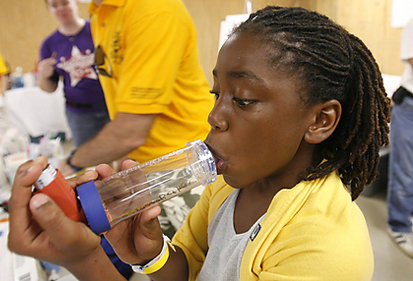
All Day NATIONAL Public Hearing on a New Federal Ozone Standard
Thursday, January 29th, 9am to 7:30 pm
Arlington City Hall, 101 W. Abram
There are only three national public hearings on the possibility of lowering the national federal ozone, or smog, standard. One is in Washington DC, another is in Sacramento, California and the third is right here in Arlington, Texas. We need everyone that can come and speak for 5 minutes on the importance of cleaner air to do so. You know industry and elected officials hostile to the EPA and the Clean AIr Act will be well-represented
To secure your 5-minute speaking slot, e-mail Eloise Shepard and ask for one in the time period during the day on Thursday most convenient for you. Please do it asap: shepherd.eloise@epa.gov.
There are at least two very good reasons why North Texas residents should support a new lower smog standard of 60 parts per billion – the lowest standard under consideration by the EPA.
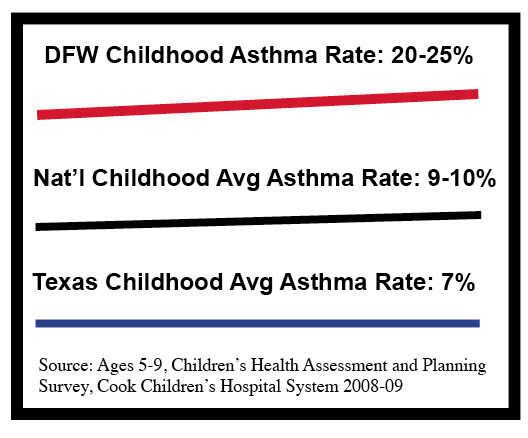 1. DFW has Epidemic Childhood Asthma Rates
1. DFW has Epidemic Childhood Asthma Rates
According to a first-of-its kind survey in 2008 by Cook Children’s Hospital, one out of every four DFW children ages 5-9 suffered from asthma. That was more than twice the national average, and more than three times the average for the state of Texas. Asthma is the most common cause of missed school days and is one of most common causes of Emergency Room visits and hospitalizations.
The DFW Hospital Council estimates nearly 1500 children in Dallas County visited an emergency room or were admitted to a hospital due to asthma in 2012. Dallas County has the highest number of child asthma hospitalization in the state.
According to EPA itself, a new 60 parts per billion (ppb) standard for ozone would eliminate roughly 1.8 million asthma attacks, 1.9 million missed school days, and 6,400 premature deaths nationwide – 95% of all ozone-related deaths. Few regions would benefit more from such a lower ozone standard than DFW.
2. It’s One of the Few Ways to Force Reductions in Harmful Air Pollution in Texas 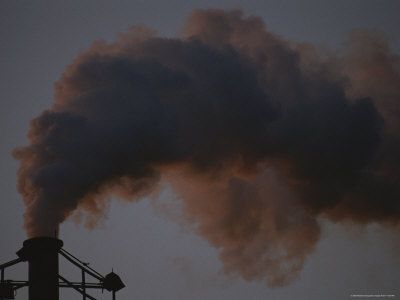
Texas is a place where industry rides rough shod over state regulators and citizens don’t have a level playing field to seek relief from the adverse health consequences of air pollution. Tougher federal ozone standards are one of the only ways to reduce air pollution from large local sources like the cement kilns in Midlothian, gas facilities in the Barnett Shale, and coal plants in East Texas.
Lower federal ozone standards over the last two decades, combined with grassroots campaigns have resulted in the lower volumes of smog pollution from the Midlothian cement kilns, plus reductions in other kinds of harmful pollution from the kilns as well, like particulate matter, and carcinogens. A new 60 ppb ozone standard would mean the kilns would have to add state-of-the-art controls to bring down those totals even more – to as much as 90% reductions. The same is true with the East Texas coal plants and with polluting gas facilities. To get down to 60 ppb ozone levels in DFW could mean deep cuts from the largest sources of industrial air pollution in North Texas. Something that probably won’t happen without a new, lower federal ozone standard.
And that won't happen without a lot of you showing up on Thursday to say you want and need cleaner air to breathe. Reserve your 5-minute speaking slot now. It's a good investment if you live in Texas.
Don’t put away those gas masks yet: EPA’s National Ozone Public Hearing is Next Thursday in Arlington
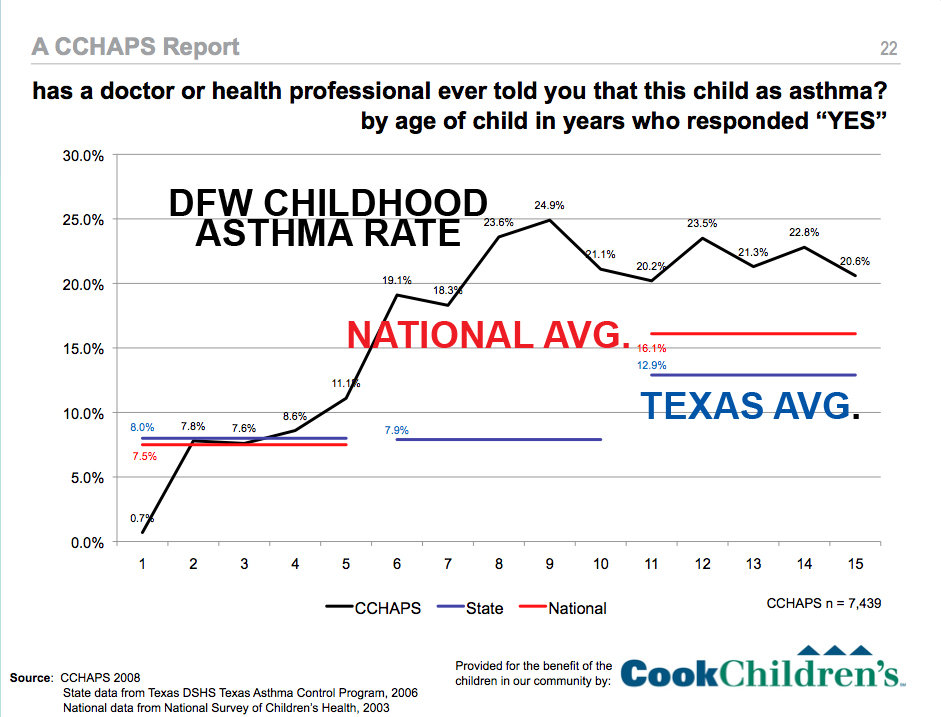
All Day NATIONAL Public Hearing on a New Federal Ozone Standard
Thursday, January 29th, 9am to 7:30 pm
Arlington City Hall, 101 W. Abram
(To secure a 3-minute speaking slot, e-mail Eloise Shepard and ask for one in the time period most convenient for you. Slots are going fast (and not necessarily to citizens), so do it asap: shepherd.eloise@epa.gov)
It's Round Two of January's clean air public hearing marathon, and the biggest has been saved until last.
One of only three national public hearings on lowering the federal ozone, or smog standard, is taking place here in DFW, at Arlington City Hall all day next Thursday January 29th, from 9 am to 7:30 pm.
Last week saw a state-sponsored hearing on another TCEQ do-nothing DFW clean air plan. But the state wouldn't even have to pay lip service to such plans were it not for the requirement to meet a federal ozone level and the region's inability to do so over the last two decades.
Lowering the federal ozone level means it will be tougher in the future for the state to claim it doesn't have to implement any new pollution controls on cement kilns, coal plants, or gas facilities. More importantly, enforcement of a tougher standard means better public health: fewer "bad air days," fewer asthma attacks, fewer trips to the emergency room because your child can't breath, and fewer deaths caused by dirty air.
That's important because reports like the child heath survey from Cook Children's hospital in 2009 showed that childhood asthma rates in DFW were twice the state average and almost 10% higher than the national average. It called the prevalence of asthma among local children an "epidemic."
Currently, the national ozone standard is 75 parts per billion (ppb) – which DFW is still at least three years away from reaching even under the rosiest of scenarios. (Right now our average is 81 ppb, and that's only because of a wetter and cooler summer in 2014). But that 75 ppb number is a political compromise – not one grounded in science. Based on public health studies the EPA's own independent board of specialists has recommended a range of 60 to 70 ppb at least three times since 2008, with an emphasis on the lower end of that range. Now it looks as if the EPA is finally willing to follow through on that recommendation.
EPA's national ozone standard sets the goal of cleaner air that every state must work toward. It drives all new clean air plans. like the one the state of Texas is proposing for DFW right now. The lower the standard, the more pollution has to be reduced. The more pollution has to be reduced, the more controls have to be added to major sources of air pollution to get that reduction. That's how you get long-term clean air progress in states like Texas that refuse to act on their own.
A significant reduction in the federal standard – from 75 (ppb) to as low as 60 ppb would make it much, much harder for Texas to avoid new controls on industry. To give you some idea of how much harder, consider that the state's "plan" for compliance with the current 75 ppb level is completely dependent on a new EPA gasoline mix coming onto the market in 2017. Even then, it's own estimates say that it won't get down below 75 at least three or four monitoring sites. Just one monitor site out of compliance means the whole region is in violation. Short of a huge rise in the use of electric cars, more huge decreases in vehicle pollution aren't expected. Additional significant drops in smog that would be required under a new, lower standard would have to include controls on major industrial sources – like the cement kilns, coal plant and, yes even gas facilities.
When you have a much lower ozone standard, you have to reduce smog by addressing ALL sources of air pollution.
Finding a way to comply with a lower national ozone standard is how more modern pollution controls were mandated almost a decade ago at the Midlothian cement plants. Meeting that new ozone standard meant pollution from the kilns had to be reduced and that made it more possible for Downwinders' "Green Cement" campaign to work with local governments. Today, there are no obsolete "wet kilns" left in Texas – they've all been replaced with more modern dry kiln operations. This has resulted in a reduction of hundreds, even thousands, of tons of smog-forming air pollution from these huge sources every year. We still have to require state-of-the-art Selective Calaytic Reduction (SCR) on the kilns, but they're releasing far less pollution than they were even five years ago because they've had to comply with a new federal ozone level.
With a new, lower ozone standard, the same could be true of new controls on gas facilities, like the 650 large compressors in North Texas, and the East Texas coal plants. That's why it's important for Texas residents to fight for the lowest possible standard this time around. When you testify, please make sure you request a new standard of NOT MORE THAN 60 PARTS PER BILLION.
According to a recent EPA staff analysis, an ozone standard of 60 ppb would reduce asthma deaths in the US by 95%, compared to only a 50% reduction under a 70 ppb level. If you want air that can eliminate all but a small fraction of respiratory problems associated with outdoor pollution, you need to press for a 60 ppb standard.
Needless to say industry is fighting back hard against such a standard, using its usual doom and gloom forecasts of economic hardship. This is the same argument that was used against the current ozone standard – the one we have now in the middle of the biggest economic boom in a decade. In fact, the technology for bringing down pollution levels currently exists in many industries – including kilns, coal plants and compressors. It's not experimental and it's not too expensive to use, as demonstrated by its use right now in those industries. We just have to require its use in states like Texas that are refusing to implement progress. That's why this new standard is so important – it will make the state take action it would not otherwise take. It's one of the only ways citizens who care about cleaner air in Texas can force progress.
Likewise, the Texas Commission on Environmental Quality's own toxicologist, Michael "Smog Ain't Bad For You" Honeycutt will also be testifying. TCEQ knows that a lower standard will force its hand on new controls. It will be pulling out all the stops to use its influence and that of sympathetic elected officials to scuttle any change. Using ideologically-based arguments supported by industry-financed studies, the TCEQ will say there are no real benefits to reducing DFW smog. Those of you that know better have to show up and say so.
Speaking slots for the 29th are going very fast. Industry will be well-represented. Please don't get left out. We need your voice that day to call for a 60 ppb national ozone standard. E-mail the EPA at shepherd.eloise@epa.gov and reserve your time today.
Bottom Line: If You Think DFW Still Has A Smog Problem, Be in Arlington Tonight
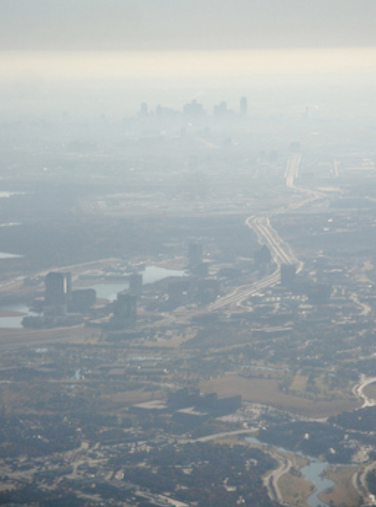 You don't have to have any special technical knowledge. You don't have to know regulatory or legal jargon. You just have to believe we still have a problem with smog in Dallas-Fort Worth. That's all it takes to participate in the air quality extravaganza happening tonight in Arlington. It's a rare two-for one chance to help the fight for cleaner air.
You don't have to have any special technical knowledge. You don't have to know regulatory or legal jargon. You just have to believe we still have a problem with smog in Dallas-Fort Worth. That's all it takes to participate in the air quality extravaganza happening tonight in Arlington. It's a rare two-for one chance to help the fight for cleaner air.
Public Hearing on the State's New DFW Air Plan 6:30 pm Tonight, Arlington City Hall, 101. W Abram
All you have to do is sign-up to speak, wait for your name to be called, and tell the state and the EPA representatives who'll be present that you want something better than a clean air plan that does nothing to get cleaner air except wait for a new federal gasoline formula to hit the market a year before the plan's deadline. The more people that do this, the more pressure EPA is under to reject this terrible state plan. Nothing fancy. Just show up and say you want better – that this region deserves better after two decades of being in violation of the Clean Air Act.
Click here to send prepared written comments to the state and EPA. You can add your own as well.
Roasting and Toasting of Retiring State Representative Lon Burnam – A Fundraiser for Downwinders at Risk, 7:30 -10 pm, Tonight, South Street Patio, 400 South Street – about four blocks east of Arlington City Hall
If you think DFW smog is still a problem, after you say your piece at the state hearing come and support the only group committed to trying making its elimination a priority – Downwinders at Risk. Since the mid-1990's we've been using these air plans to raise issues, get information, and sometimes even win victories that actually do lead to cleaner air. A big reason there's no more burning of hazardous waste in the Midlothian cement plants, and all of those cement plants have upgraded their equipment is because of the work we did around smog. Lately, we've been using them to drive home how much gas and oil pollution contribute to regional smog.
But we need your help – in terms of attendance at public hearings, and in terms of financial assistance. For your donation of $35 to this roasting and toasting of Lon, you get an evening of entertainment and take part in a salute to a real local clean air hero. And you make it more possible to keep challenging the status quo on behalf of your lungs.
CLICK HERE TO GET YOUR TICKETS ONLINE OR GET THEM AT THE DOOR TONIGHT
If you still think we have a smog problem, there's two things you can do about it tonight. Thanks.
TCEQ’s Terrible, Horrible, No Good, Very Bad Air Plan for DFW
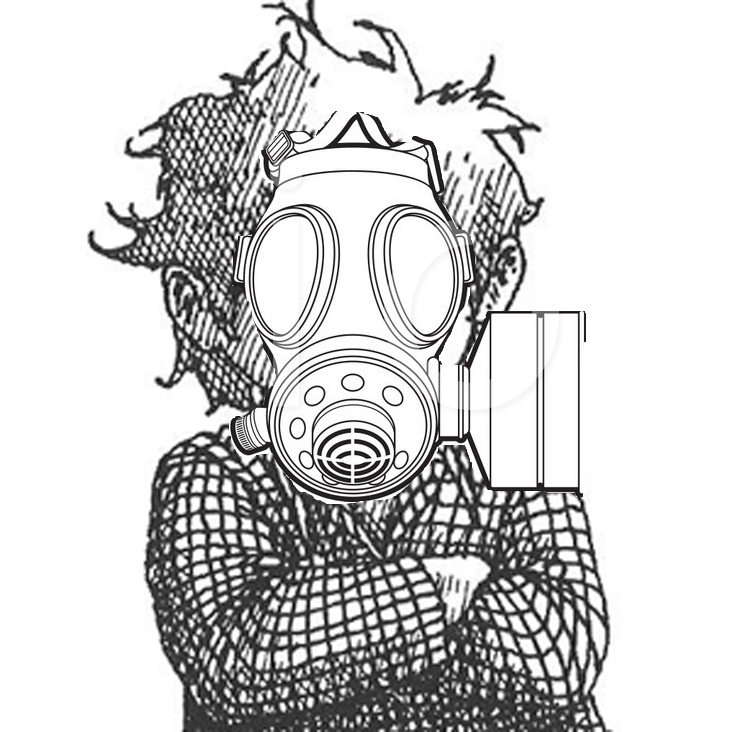
TCEQ Public Hearing on the new DFW Anti-Smog Plan
Thursday, January 15th 6:30 pm
Arlington City Hall, 101 W. Abram
Over the last two decades, we've seen some pretty lame DFW clean air plans produced by the state, but the newest one, scheduled for a public hearing a week from now, may be the most pathetic of the bunch.
From a philosophical perspective, the Texas Commission on Environmental Quality stopped pretending to care about smog in DFW once Rick Perry decided to run for president around 2010 or so. Computer modeling was scaled back, staff was slashed, and the employees that were left had to be ideologically aligned with Perry's demand that no new controls on industry (i.e potential or existing campaign contributors) was preferable to six or seven million people continuing to breathe unsafe and illegal air.
TCEQ's 2011 anti-smog plan reflected that administrative nonchalance by concluding – in the the middle of the Great Recession – that consumers buying new cars would single-handedly deliver the lowest smog levels in decades. It did not. It went down in history as the first clean air plan for the area to ever result in higher ozone levels. The first, but maybe not the last.
This time around, it's not the cars themselves playing the role of atmospheric savior for TCEQ, but the fuel they'll run on. Beginning in 2017, the federal government is scheduled to introduce a new, low-sulfur gasoline that is predicted to bring down smog by quite a bit in most urban areas. Quite a bit, but not enough to reach the ozone standard of 75 ppb that's necessary to comply with the Clean Air Act by 2018. It's the gap between this official prediction and the standard where the state is doing a lot of hemming and hawing.
TCEQ staffers really did tell a summertime audience in Arlington that that estimated 2018 gap of between 1 and 2 ppb was "close enough" to count as a success. Now, you might give them the benefit of the doubt, but remember this is an agency that has never, ever been correct is its estimation of future ozone levels. After five attempts over the last two decades, TCEQ has never reached an ozone standard in DFW by the official deadline. Precedent says this plan won't even get "close enough."
Plus, we know getting "close" to 75 ppb isn't protecting public health in DFW. Even as this clean air plan is being proposed by Austin, the EPA is moving to lower the national ozone standard to somewhere between 60 and 70 ppb (There's a hearing on that at Arlington City Hall on January 29th). That new EPA ozone standard is due to be adopted by the end of this year. So this entire state plan is obsolete from a medical perspective. Instead of aiming for a level of ozone pollution closer to 70 ppb as soon as possible, it's not even getting down to a flat 75 ppb at all DFW monitors by 2018. It wil take an entirely new plan, and pulling TCEQ teeth, to do that much later. In other words, millions of people will have to wait as much as a five to seven years longer to get levels of air quality we know we need now in 2015.
What are the major flaws this time?
1. TCEQ is Using 2006 in 2014 to Predict 2018.
The EPA recommends that states use an "episode" of bad air days from the last three years – 2009-2013 – in trying to estimate what ozone levels will be three years from now. The more recent the data, the better the prediction.
TCEQ is ignoring that recommendation, relying on a computer model that's already nine years old. This has all kinds of ramifications on the final prediction of compliance. Instead of having more recent weather data, you have to "update" that variable. TCEQ doesn't have to compensate for the drought DFW is experiencing now or factor in a year like 2011 where the drought caused a worst case scenario for ozone formation.
TCEQ isn't using more recent data on how sensitive monitors are to Nitrogen Oxide (NOx) and Volatile Organic Compounds (VOCs) – the major kinds of pollution that cause smog . That's important because gas production in the Barnett Shale has put a lot more VOCs in the air. But instead of getting a more accurate post-drilling boom read on what's driving smog creation, the TCEQ is relying on a picture that starts out before the boom ever started.
The further you reach back in time for a model to predict future levels of smog, the fuzzier that future gets, and the less accurate the results. TCEQ is using a model that's twice to three times older than EPA guidance recommends. What are the odds that TCEQ estimates will be correct based on this kind of methodology?
2. TCEQ is Downplaying OIl and Gas Pollution
Citizens attending the air quality meetings in Arlington over the past year have seen the TCEQ try and hide the true volume and impact of oil and gas pollution at every turn. Instead of all the industry emissions being listed under the single banner of "Oil and Gas Pollution," the Commission has tried to disperse and cloak them under a variety of categories in every public presentation.
"Other Point Sources," a classification that had never been seen before, was the place where pollution from the 647 large compressor stations in DFW could be found – if you bothered to ask. "Area Sources" was where the emissions from the thousands of other, smaller compressors could be found – again, only if you asked. "Drilling" was separate from "Production." And despite other agencies being able to tease out what kind of pollution came from the truck traffic associated with fracking within their jurisdictions, the TCEQ never bothered to estimate how much of the emissions under "Mobile Sources" was generated by the Oil and Gas industry.
The reason the TCEQ has tried so hard to hide the true volumes of oil and gas pollution is because once you add up all of these disparate sources, the industry becomes the second largest single category of smog-forming pollution in DFW, second only to on-road cars and trucks (and remember many of those trucks are fracking-related). According to TCEQ's own estimates, oil and gas facilities in North Texas produce more smog-forming VOC pollution than all of the cars and trucks in the area combined, and more smog-forming NOx pollution than the Midlothian cement plants and all the area's power plants combined.
TCEQ is loathe to admit the true size of these emissions and place them side-by-side next to other, traditional sources, lest the public understand just how huge a impact the oil and gas industry has on air quality. Austin's party line is that this pollution isn't contributing to DFW smog – that it's had no impact on local air quality. But such a claim isn't plausible. If cars are a source of smog, and cement kilns and power plants are a source of smog, how can a category of VOC and NOx pollution dwarfing those sources not also be a source of smog? Think how much less air pollution we'd have if the Barnett Shale boom of the last eight years had not taken place?
In it's last public presentation in August, the TCEQ made the impact of oil and gas pollution clear despite itself. According to the staff, oil and gas emissions were going to be decreasing in the future more than they had previously estimated. As a result, a new chart showed that certain ozone monitors, including the one in Denton, would see their levels of smog come down significantly. It was exactly the proof of a causal link between gas and smog that TCEQ had been arguing wasn't there. Only it was.
In terms of forecasting future smog pollution, TCEQ is underplaying the growth of emissions in the gas patch. Everything it's basing its 2018 predictions on is years out-of-date, leftover from its last plan.
Drilling rig pollution is extrapolated from a 2011 report that counts feet drilled instead of the actual number of rigs. TCEQ predicts a decline in drilling and production in the Barnett Shale without actually estimating what that means in terms of the number of wells or their location. It also assumes a huge drop-off in gas pollution after 2009 that hasn't been documented by any updated information. It's only on paper.
While recent declines in the price of oil and gas have certainly put a damper on a lot of drilling activity, there's still a significant amount going on. Look no further than Mansfield, where Edge is now applying for permit to build a new compressor and dozens of new wells on an old pad.
In 2011, nobody was building Liquified Natural Gas terminals up and down the Gulf Coast for an export market the way they are now. Analysts say those overseas markets could produce a "second boom" in drilling activity between now and 2018, but the TCEQ forecasts don't take that into account.
Gas production pollution numbers – emissions from compressors, dehydrators, storage tanks – are even more tenuous. Every gas industry textbook explains that as gas plays get older, the number of lift compressors increases in order to squeeze out more product. Increase the number of compressors and you increase the amount of compressor pollution. But TCEQ numbers fly in the face of that textbook wisdom and predict a decline in compressor pollution because wells in the Barnett Shale are getting older!
The best analogy for how TCEQ is estimating oil and gas pollution is its poor understanding of where those thousands of smaller compressor are and how much pollution they're actually producing. No staff member at TCEQ can tell you how many of those compressors there are in the region – they literally have no idea and no idea of how to count them in the real world. There are just too many, their locations are unknown, and they were never individually permitted.
Instead, the TCEQ takes production figures from the Railroad Commission and guesses how many of those small compressors there are, as well as their location, based on where the RRC tells it production is going on in the Shale. Then staff guesses again about the emissions being emitted by those compressors, because there's no data telling them what those emissions actually are. In the end you have a series of lowballed guestimates, stacked one atop the other, presented as fact. It's smoke and mirrors.
3. TCEQ Isn't Requiring Any New Controls on Any Major Sources of Air Pollution
Like its previous 2011 DFW air plan, which resulted in an increase in North Texas ozone levels, TCEQ's new plan requires no new controls on any major sources of air pollution, despite evidence showing that such controls in smog-forming emissions from the Midlothian cement plants, East Texas coal plants, and Barnett Shale gas facilities could cut ozone levels significantly.
Selective Catalytic Reduction (SCR) is already used extensively in the cement plant industry in Europe to reduce smog pollution by up to 90%. Over a half dozen different plants have used the technology since 2000. The TCEQ's own 2006 report on SCR concluded it was "commercially available." Holcim Cement has already announced it will install SCR in its Midlothian cement plant. Yet the TCEQ makes no mention of this in its plan.
That's right, a cement plant in Midlothian has decided SCR is commercially viable, but the State is looking the other way and pretending this development in its own backyard isn't even happening. TCEQ is stating in its proposed plan that SCR just isn't feasible!
In 2013, a UTA Department of Engineering study looked at what happened if you reduced Midlothian cement plant pollution by 90% between 6 am and 12 Noon on weekdays. Ozone levels went down in Denton by 2 parts per billion. That may not seem like a lot, but in smog terms it's the difference between the Denton air monitor violating the 75 ppb standard under the TCEQ plan and complying with the Clean Air Act.
In 2012 a UTA College of Nursing study found higher rates of childhood asthma in Tarrant County "in a linear configuration" with the plumes of pollution coming from the Midlothian cement plants. SCR means less pollution of all kinds: smog, dioxins and the particulate matter the Nursing College thought was causing those increased rates of childhood asthma. By delaying the requirement that all the Midlothian cement plants install SCR by 2018, the state is turning its back on a problem that Cook Children's hospital described as "an epidemic."
The same is true of SCR in the East Texas coal plants. The technology is being used in other coal plants around the world and in the US to reduce smog pollution. There's no reason it shouldn’t be required for the dirtiest coal plants in Texas that impact DFW air quality. After decades of being out of compliance with the Clean Air Act, DFW is one of the places the technology is needed most.
Last year the Dallas County Medical Society, led by Dr. Robert Haley, petitioned the TCEQ to either close those coal plants or install SCR on them. The doctors' petition was rejected by TCEQ Commissioners and they were told their concerns would be addressed in the DFW air plan. They aren't. Those concerns, along with the proof they presented about the impact of the plants on local air quality, are being ignored.
Electrification of gas compressors is a commonly used technology that could cut smog pollution as well, and yet the TCEQ is not requiring new performance standards that would force operators of hundreds of diesel and gas-powered compressors in North Texas to switch to electricity.
A 2012 Houston Advanced Research Center study found that pollution from a single compressor could raise local ozone levels by as much as 3 to 10 ppb as far away as ten miles. There are at least 647 large compressor stations in the western part of the DFW area. Dallas and other North Texas cities have written ordinances requiring only electric-powered compressors within their city limits based on testimony from industry that electrification was a commonly used technology in the industry. And yet, TCEQ's official position is that electrification isn't feasible.
In ignoring these types of new controls the TCEQ is violating provisions of the Clean Air Act to implement "all reasonably available control technologies and measures" to insure a speedy decrease in ozone levels. Each of these technologies is on the market, being used in their respective industries, and readily available. Studies have shown that each of these technologies could cut ozone levels in DFW significantly, but the TCEQ is refusing to implement them. In doing so, many observers believe it's blatantly in violation of the law.
We don't expect TCEQ to change its position. That well has been poisoned for the foreseeable future. But we do expect a higher standard of enforcement from the Obama Administration EPA. That's why we're asking you to show-up at the public hearing and oppose this dreadful state air plan a week from now in Arlington. We need to demonstrate to the federal government that citizens are concerned about getting cleaner air now, not in the next plan or the one after that. Now. We need to put pressure on the EPA to reject this TCEQ plan, to either send it back to the drawing board or substitute one of its own. Without you showing up, that pressure isn't there.
Between now and Thursday – and all the way through January 30th, you can send prepared comments opposing the TCEQ plan to Austin and the EPA Regional Administrator with a simple click here – and add your own comments as well.
As a reward for coming over and venting your frustration, we'd like you to stay and party with us at the official "retirement party" of State Representative Lon Burnam, beginning at 7:30 pm just four blocks down the street. It's a roasting and toasting of the best friend environmentalists ever had in the Texas Legislature, as well as a fundraiser for Downwinders to continue our work to defend your air. JUST CLICK HERE FOR TICKETS.
Next Thursday you can support clean air two ways in one evening. Help us beat back a terrible, horrible, no good, very bad air plan, and then come celebrate the wonderful, righteous, very good work of a dedicated public servant. See you there.
State Public Meeting Tonight on New Permit for Holcim’s Midlothian Cement Plant
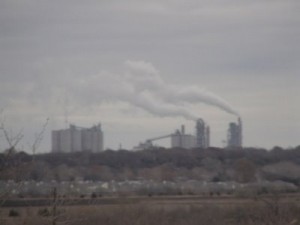 There's a public meeting hosted by TCEQ at 7pm tonight concerning the new permit for Holcim's Midlothian cement plant. It's taking place at the Midlothian Conference Center, at 1 community Center Road, right off Hwy 287. Here's a map if you need one.
There's a public meeting hosted by TCEQ at 7pm tonight concerning the new permit for Holcim's Midlothian cement plant. It's taking place at the Midlothian Conference Center, at 1 community Center Road, right off Hwy 287. Here's a map if you need one.
This is your only chance to ask questions and raise concerns about Holcim's new permit, or any other aspect of Holcim operations in a public forum in 2014.
Remember that Holcim's pollution contributes to higher smog levels as far north as Denton and Wise Counties. Along with TXI and Ash Grove, its plumes have been associated with higher childhood asthmarates in southeast Tarrant County.
Holcim is also still the only Midlothain cement plant still blasting for rock. The others use machinery to mine limestone, Holcim uses ammonium nitrate, the same explosives that caused the West, Texas catastrophe.
The good news is that Holcim has decided to install Selective Catalytic Reduction (SCR) pollution control on one of their two large cement kilns. That's what the new permit mostly is about. Although well-known for reducing smog-forming Nitrogen Oxide (NOx) in the European cement industry, Holcim is using it to reduce Total Hydrocarbons – a category of pollutionthat includes toluene, benzene, and xylene.
You can read about how important a victory SCR is for all DFW breathers here. It's been a 15 year effort. Holcim's decision to install SCR should be celebrated.
But important questions remain about when the SCR unit will become operational and how reductions in airpollution like NOx will be tracked by the company.
SCR is only being installed on one of two Holcim kilns in Midlothian. The other kiln is getting a "Regenerative Thermal Oxidizer" – the equivalent of a flare on a gas well – to burn off its total Hydrocarbons.
Because they're combustion-based, RTOs increase NOx pollution. How much, and how Holcim can catch that increase before it goes up the stack is alsothe subject of the permit.
The public meeting on Monday is not a hearing. But it is the only public forum where citizens can thank Holcim for finally installing SCR, as well as express their concerns and ask questions about the permit.
We know it's a busy time of year, and it's the day before Election Day, but do your lungs a favor and attend a meeting about a permit that can affect them for good or bad.
2014 DFW Smog Report: Good News But Don’t Hang Up the Gas Mask Yet
 For the first time since DFW began recording its smog levels, the region's three-year running average dipped below the 1997 eight-hour 85 parts per billion (ppb) standard. After years of leveling off at around 86-87, it's dropped to 81 ppb. That's good news.
For the first time since DFW began recording its smog levels, the region's three-year running average dipped below the 1997 eight-hour 85 parts per billion (ppb) standard. After years of leveling off at around 86-87, it's dropped to 81 ppb. That's good news.
DFW's decrease is attributed to 2011's terrible numbers rolling off the board and a wetter, cooler and windier summer than normal these last five months or so. As both drought-ridden 2011 and this year's results demonstrate, weather still plays an extremely critical role in how large or small our smog problem will be. Another summer or two like 2011 could easily put us back over the 1997 standard. More wet and cooler weather could see the decrease continue.
The news would be better except that we were supposed to have originally accomplished this milestone in 2009, then again last year after a second try, according to the Texas Commission on Environmental Quality (TCEQ).
As it is, we still haven't reached the current, more protective 2008 national standard that was revised downward to 75 ppb after a review of the scientific literature.
In January, TCEQ will host a public hearing on its proposed "plan" to EPA to meet that goal that predicts most, but not all DFW monitors will reach 75 ppb by the summer of 2018.
Despite overwhelming evidence that new controls on the Midlothian cement plants and the reduction of gas industry pollution could speed this achievement, TCEQ's new plan contains no new pollution control measures on any major sources of smog polluters – cement kilns, coal plants, gas sources – but instead relies on the federal adoption of a new lower-sulfur gasoline mix for on-road vehicles. Like past proposals by Rick Perry's TCEQ, this one depends solely on the feds to get them into compliance. TCEQ isn't lifting a regulatory finger to help.
And its new plan once again aims high, not low. At last count, there were at least three Tarrant and Denton County monitors that TCEQ admitted would still be above the 75 ppb standard at the end of 2018. "Close enough" is the reply from Austin.
From a public health perspective, it's even worse. Why does the ozone standard keep routinely going down? Because new and better evidence keeps accumulating to show widespread health problems at levels of exposure to smog that were once considered "safe." About every five years, the EPA's scientific advisory committee must assess the evidence and decide if a new standard needs to be enforced to protect public health.
For most of the last ten years, the position of this independent panel of scientists is that the standard should be somewhere between 60 and 70 ppb. They were ignored in 2008. They were ignored in 2011. They once again came to this conclusion last May. What was the evidence that persuaded them? That the current 75 ppb standard for smog causes almost 20% of children in "non-attainment areas" to have asthma attacks, and leads to hundreds of thousands of deaths every year. Cutting the standard to 60 ppb reduces those deaths by 95%. Since the Clean Air Act states the EPA is duty bound to set a smog standard protective of human health, 60 ppb seems to be the threshold level that the current scientific literature says is actually safe for the majority of the population most vulnerable to the impact of bad air. By contrast, a smog level of 70 ppb only reduces those deaths by 50%. (Policy Assessment for the Review of the Ozone National Ambient Air Quality Standard, U.S. Environmental Protection Agency, Office of Air and Radiation, Office of Air Quality Planning and Standards, Health and Environmental Impacts Division, Ambient Standards Group, August 2014)
By December 1st, EPA Administrator Gina McCarthy must decide whether to officially recommend a standard in that 60-70 ppb range. It looks as though this time, the EPA might just endorse what the scientists are recommending, although it's unclear whether it'll be the upper or lower part of that range.
So even while the TCEQ is saying it's "close enough" to achieving the 75 ppb standard left over from George W's administration by 2018, the evidence is that level is too high to prevent large public health harms and must be lowered. A lot.
This is why it's so infuriating that the TCEQ is satisfied with getting only "close enough" to a 2008 standard that's about to become obsolete. Austin knows it could demand better air pollution control measures on the market right now that would accelerate the decrease in smog. It knows the pubic health would benefit from requiring such measures. But it's willing to condemn DFW children and others at risk for many more years for the sake of keeping its "business-friendly" reputation.
And while this year's slip below the 85 ppb standard is a sign of some progress, it remains true that DFW still has the worst air in Texas – a title we took from Houston years ago. Take a look at the chart summarizing the 2014 ozone season across Texas. Despite the nicer weather, DFW still had almost twice as many readings above 75 ppb as Houston and four above the 85 ppb standard. Houston had no readings above 85. In fact, San Antonio was the only other city to record a level so high – once.
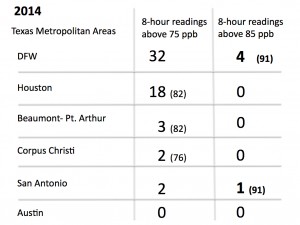 DFW still has a smog problem and all it takes is another hot and dry summer to see it escalate. We need the help more controls on major sources could give us. We need Selective Catalytic Reduction on ALL the Midlothian cement and East Texas coal plants. We need electrification of gas compressors in the Barnett Shale. This should be the message to both the TCEQ and EPA during the public hearing in January.
DFW still has a smog problem and all it takes is another hot and dry summer to see it escalate. We need the help more controls on major sources could give us. We need Selective Catalytic Reduction on ALL the Midlothian cement and East Texas coal plants. We need electrification of gas compressors in the Barnett Shale. This should be the message to both the TCEQ and EPA during the public hearing in January.
DFW smog in 2014: we've met the Clinton era standard for now, on the way to trying to get "close enough" to the W Standard, and still very far from a new Obama standard. Don't hang up the gas mask yet.
